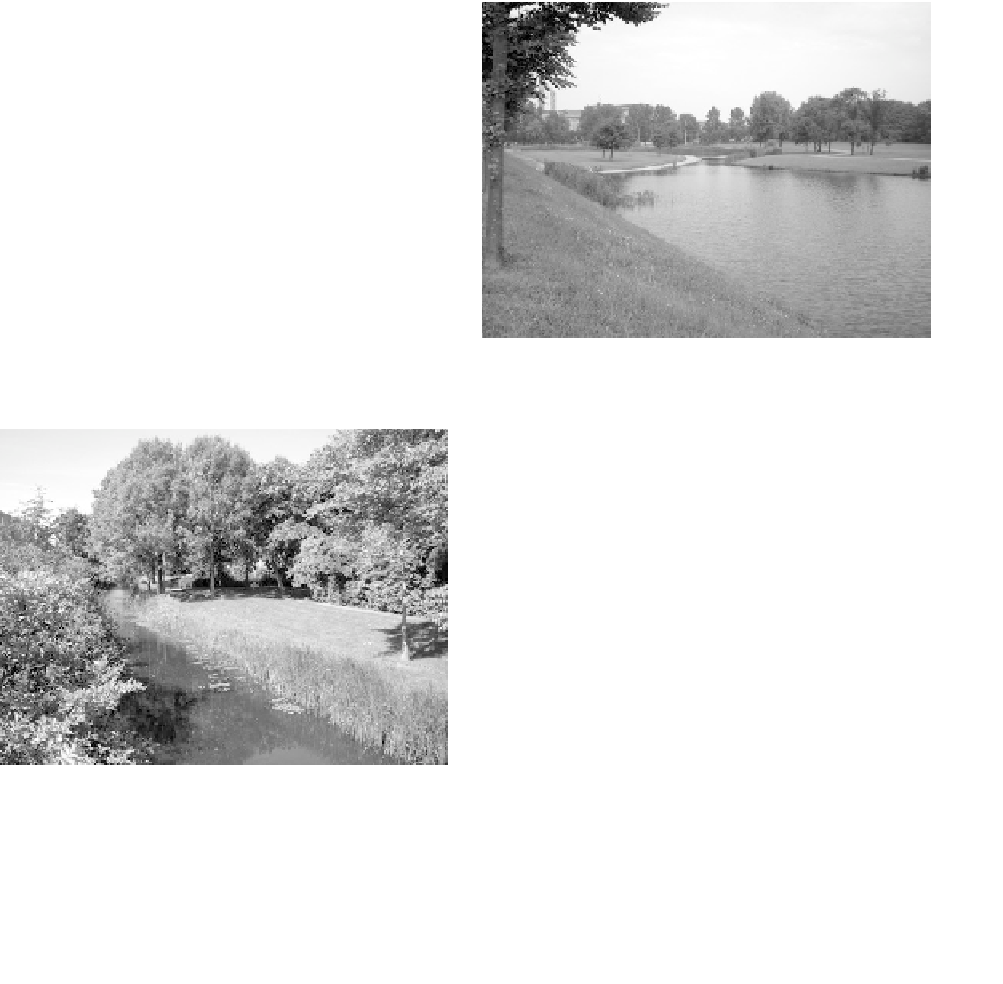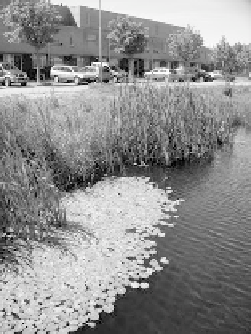Agriculture Reference
In-Depth Information
created for sunbathing and access for wading. The steep slopes forming
a basin were designed as a visual amenity while providing excess-wa-
ter-holding capacity in the event of heavy rains.
The slopes of the retention basin at Sud Park in Rotterdam, shown
in Figure 14.26, were planted in grass, most likely to reinforce the park-
like nature of the area in what is a dense, highly populated mixed cul-
tural residential area. In the examples in
Figures 14.27-A and 14.27-B, the edges are
treated to provide biodiversity, to support
wildlife as well as to improve water qual-
ity. In both examples the narrow green-
ways serve as a visual buffer between two
adjoining residential areas that line the
waterways. Even though both situations
are located in dense residential areas, one
can enjoy walking along the greenways
surrounded by vegetation, with minor
visual intrusion of the adjacent town-
houses or office complex.
Figure 14.26
Retention lake in Sud Park, Rotterdam, the
Netherlands
Figure 14.27-B
Narrow retention
canal with diverse planting to filter
water and stabilize steep side slopes
adjacent to road and parking lot in
Voorhof, the Netherlands
Figure 14.27-a
Greenway with retention canal in Voorhof,
the Netherlands


